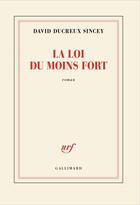Résumé:
The most significant impact and added value that ICT developments have brought to the building sector are probably the improved ease, effectiveness and efficiency of interaction and cooperation between various scientific disciplines. In EuropIA conferences, and thus in the 9th EuropIA... Voir plus
The most significant impact and added value that ICT developments have brought to the building sector are probably the improved ease, effectiveness and efficiency of interaction and cooperation between various scientific disciplines. In EuropIA conferences, and thus in the 9th EuropIA international conference, disciplines such as engineering, computer science, mathematics, physics, social sciences and arts come closer than ever before, all with their specific knowledge for contribution in a new scientific discipline: ICKT (Information, Communication and Knowledge Technology) in design and the built environment. The participation of a wide range of scientists and the scope of this conference confirms this. The conference presents a cross-platform event for the study and analysis of the application of information, communication and knowledge technologies to architecture, building engineering, civil engineering, urban design, urban planning and policy analysis. All papers in this book are from the 9th EuropIA international conference on E-Activities and Intelligent Support in Design and The Built Environment, held on 8-10 October 2003 in Istanbul, Turkey. These cross-platform papers represent state-of-the-art research and development in these fields. The papers illustrate activities in both theory and application.
The building sector is in its nature complex. In the entire building process, data, information and knowledge exchange and communication become increasingly important. Increasing emphasis on cost and time constraints requires an improved collaboration and cooperation between all parties involved in the building process. Contemporary computing technology applications for the building sector can be categorized mainly as tool, medium, and partner. As a tool, the computer mostly serves data processing. As a medium, it supports information exchange and communication. In this, the Internet plays an important role. As a partner, it serves the processing and modelling of knowledge using computational intelligence techniques such as artificial neural networks, fuzzy logic, genetic algorithms, and agents. Thus, we use the term Information, Communication and Knowledge Technology, which accurately captures this breadth.
The technological developments of the Internet and of hardware technology make it possible for the flow of data and information to be processed and communicated much more effectively than ten years ago. In the next ten years we can expect the scientific emphasis to be put on software developments. In these developments, the knowledge component will gain extra importance, in addition to data and information. Knowledge with its intelligent character will be the major research and development theme for the building industry in the coming years, and the Internet will be the platform for dissemination of data, information and knowledge, and communication and collaboration.
Hopefully, the building practice will go beyond ICT infrastructure investments and play an important role in R&D activities. This would have a strongly positive impact on the daily practice of design and construction industry partners. Next to the industry, educational institutions such as universities can play an important role in this process. The need for better educated engineers in the field of ICKT, as an integrated scientific discipline, needs attention throughout Europe. Virtual universities with joint master program initiatives have already been started up in the
Netherlands and other countries.
The educational decision makers at universities must be aware of the fact that computer science should not be considered as a supporting science but an essential part of the engineering education in Europe. If Europe chooses for a knowledge economy, the education of the young professionals is the most important fundament for this new economy! To reach innovations in the building sector, it is necessary that the various branches of the industry, universities, educational and scientific institutions, government and research institutions should all come together in a platform to define an ultimate, mutual goal. It sounds like a utopia, but there is a Dutch saying " willen is kunnen", when there is a will, there is a way...
This volume is a collection of papers related to e-activities in building design and construction. It expresses both the breadth and depth of e-activities and intelligent support in design and the built environment and offers clues about the future. The 22 papers are grouped under the following headings:Process modelling and business process reengineering ; Information and product modelling ; Knowledge modelling and soft computing
The complementary volume to this book contains papers on e-activities in design and design education1.
Sevil Sariyildiz
Bige Tunçer
Saban Suat Özsariyildiz
Delft, August 2003














